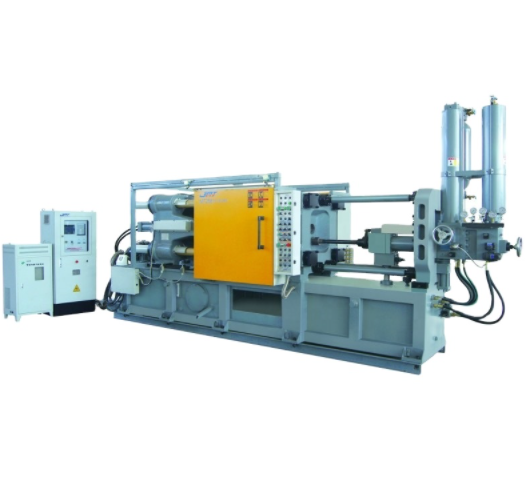Die casting machines are essential equipment to make the parts made in the metal casting process, what is a die cast machine composed of and how does it work?

How Does a Die Cast Machine Work
A die casting machine works by injecting molten metal into a die (a two-part tool used to shape the metal), under high pressure and at a high speed. Once the metal solidifies, the die is opened, and the finished part is ejected. There are multiple steps in the die casting process for aluminum, zinc, and other alloys.
1) Preparation of the die: The die is first preheated and lubricated to ensure that the molten metal flows smoothly through it. The two halves of the die are then clamped together.
2) Injection of molten metal: The molten metal is melted and maintained at a specific temperature in a furnace. A piston then forces the molten metal into a shot chamber, from where it is injected into the die under high pressure.
3) Cooling of the die: After the molten metal is injected into the die, it cools rapidly and solidifies, taking the shape of the die cavity.
4) Opening of the die: The die is opened, and the finished part is ejected from the die cavity by an ejector system.
5) Trimming and finishing: The finished part may require trimming or finishing to remove any excess material or imperfections.
6) Recycling of scrap metal: Any scrap metal that is produced during the process is collected and recycled.
The cycle time for a die casting process varies depending on the size and complexity of the part being produced, but it typically ranges from a few seconds to a few minutes.
Parts or Components of Die Casting Machines and Their Uses
Die casting machines are complex machines used to manufacture metal parts with high accuracy and consistency. Some of the main parts of a die casting machine include:
1) Die/Mold – The die is the tool used to shape the metal into the desired form. It consists of two parts, the fixed die half and the movable die half.
2) Injection System – The injection system includes the shot sleeve, plunger, and gooseneck. The molten metal is injected into the die cavity through the injection system.
3) Clamping Unit – The clamping unit is responsible for holding the die in place during the casting process. It consists of the stationary platen, movable platen, tie bars, and toggle mechanism.
4) Hydraulic System – The hydraulic system provides the power to move the various components of the machine, such as the injection system, clamping unit, and ejector system.
5) Ejector System – The ejector system is responsible for ejecting the casting from the die cavity once the casting has solidified. It includes ejector pins, an ejector plate, and an ejector cylinder.
6) Control System – The control system manages the operation of the die casting machine. It includes the machine controller, sensors, and actuators.
7) Cooling System – The cooling system helps to control the temperature of the die and the casting during the casting process. It includes cooling channels in the die and a water cooling system for the machine.
8) Lubrication System – The lubrication system is responsible for lubricating the various moving parts of the die casting machine to reduce friction and prevent wear and tear.
9) Safety System – The safety system includes various safety features to protect the operator and the machine from accidents. It includes safety guards, emergency stop buttons, and safety interlocks.

